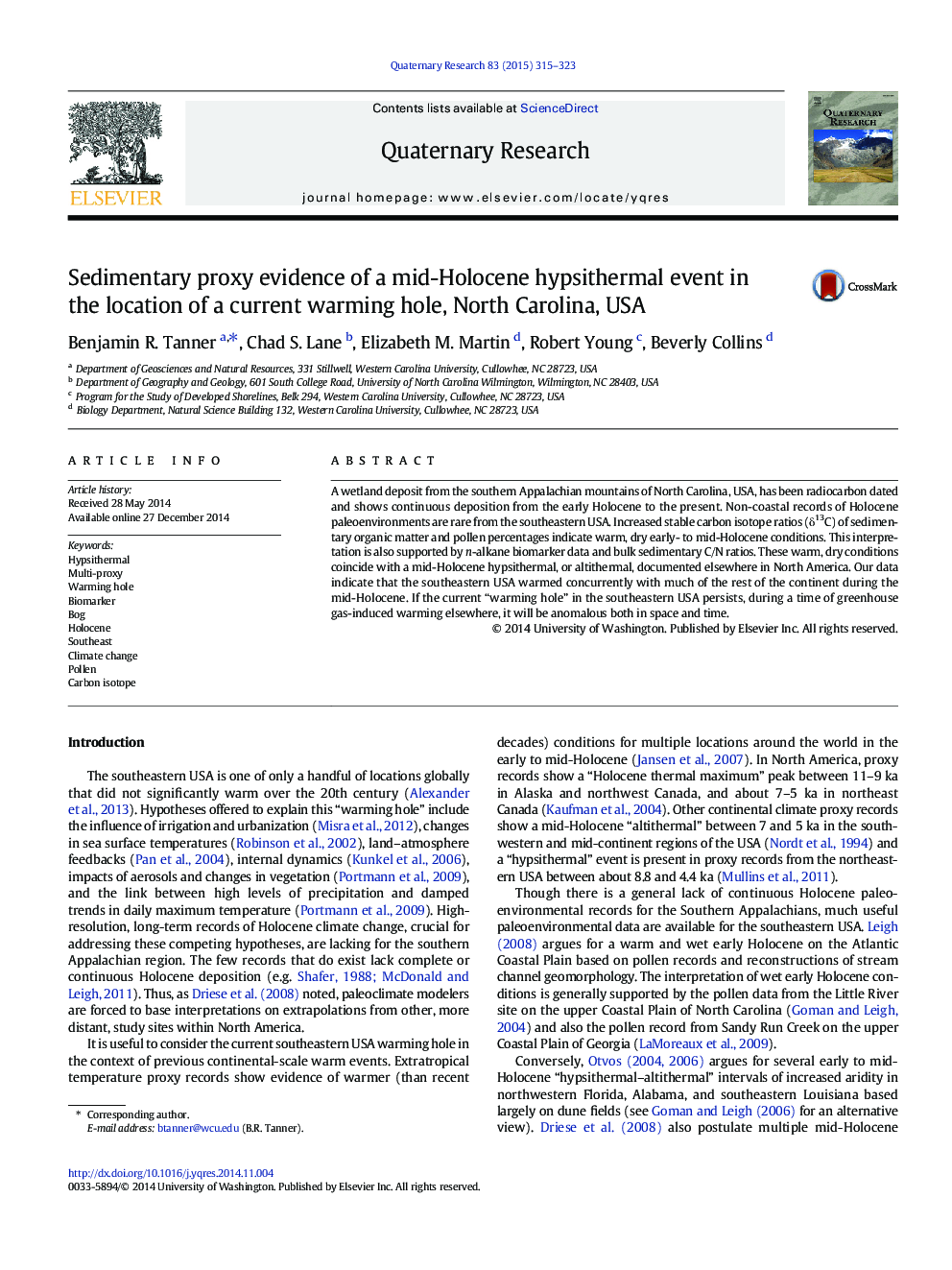| Article ID | Journal | Published Year | Pages | File Type |
|---|---|---|---|---|
| 1045146 | Quaternary Research | 2015 | 9 Pages |
A wetland deposit from the southern Appalachian mountains of North Carolina, USA, has been radiocarbon dated and shows continuous deposition from the early Holocene to the present. Non-coastal records of Holocene paleoenvironments are rare from the southeastern USA. Increased stable carbon isotope ratios (δ13C) of sedimentary organic matter and pollen percentages indicate warm, dry early- to mid-Holocene conditions. This interpretation is also supported by n-alkane biomarker data and bulk sedimentary C/N ratios. These warm, dry conditions coincide with a mid-Holocene hypsithermal, or altithermal, documented elsewhere in North America. Our data indicate that the southeastern USA warmed concurrently with much of the rest of the continent during the mid-Holocene. If the current “warming hole” in the southeastern USA persists, during a time of greenhouse gas-induced warming elsewhere, it will be anomalous both in space and time.
